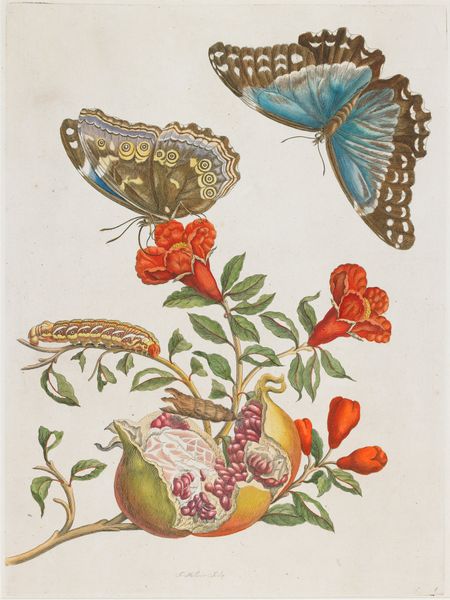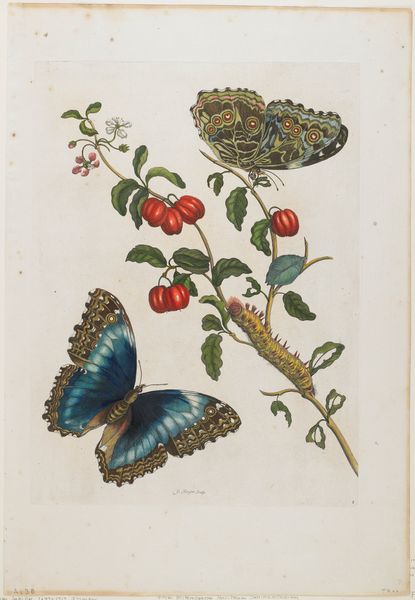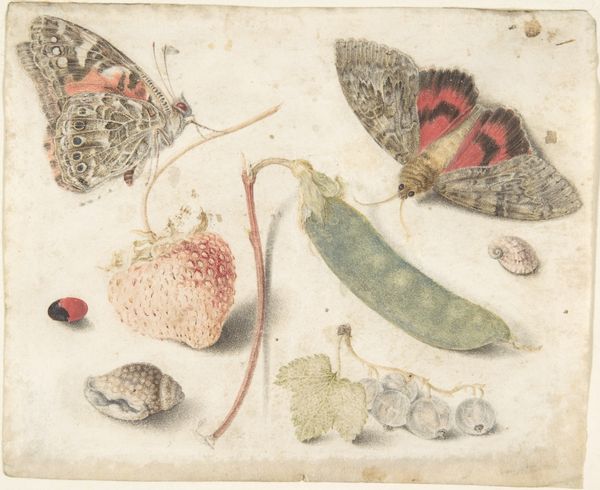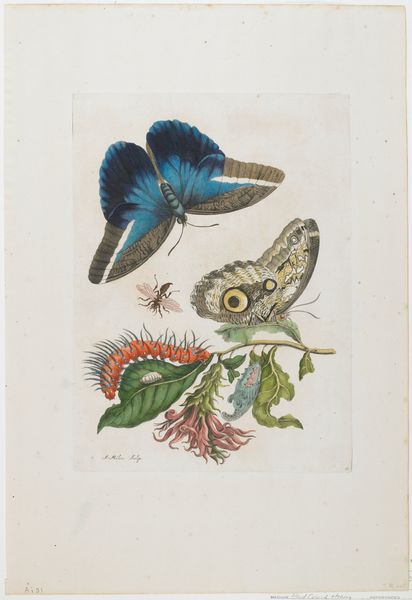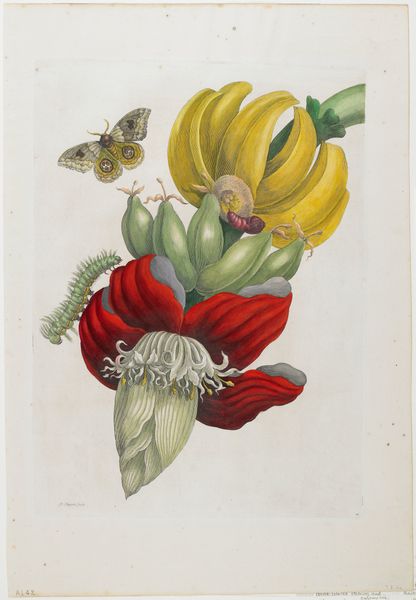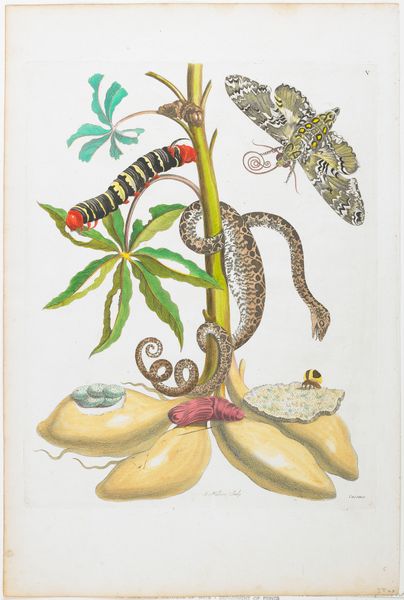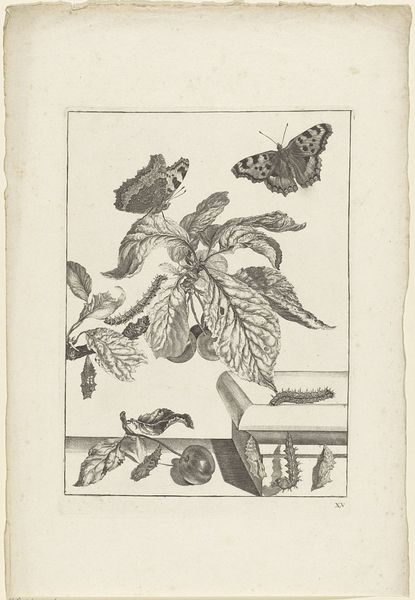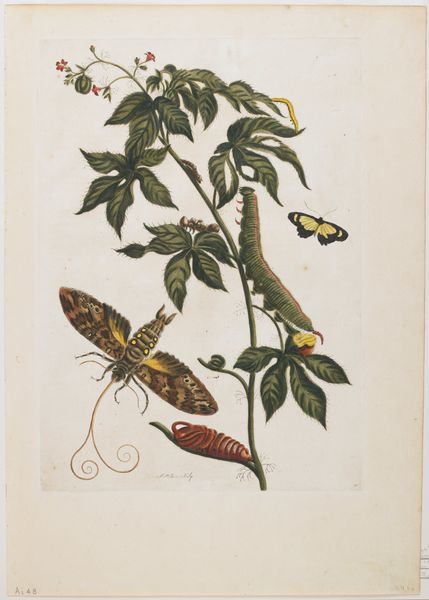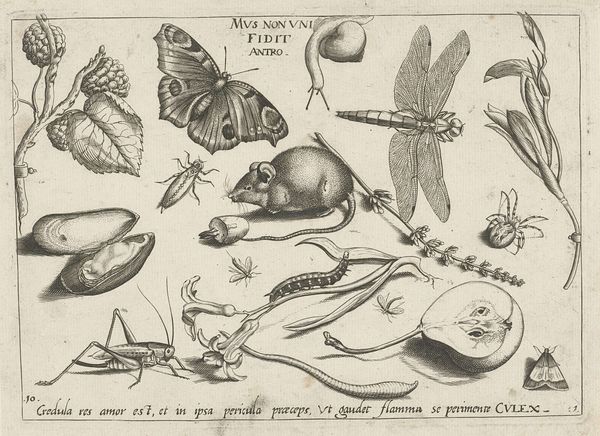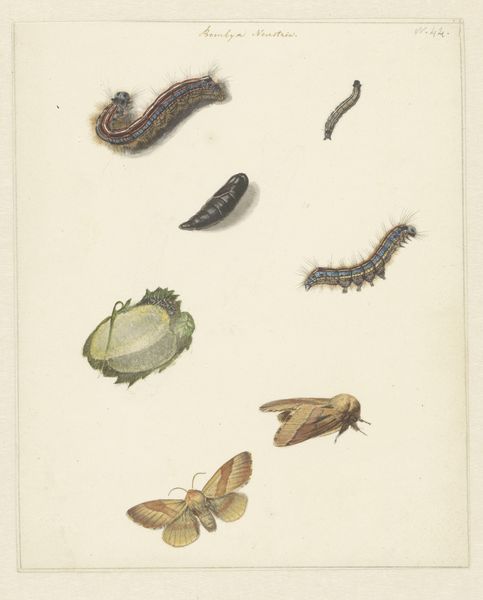
hand-colored-etching, print, watercolor, engraving
#
hand-colored-etching
#
water colours
# print
#
watercolor
#
watercolour illustration
#
history-painting
#
engraving
Dimensions: 13 x 11 1/4 in. (33.02 x 28.58 cm) (sheet)
Copyright: Public Domain
Curator: Let's explore this hand-colored etching called "Bananas and Blue Lizard," a print from the 18th century held in the Minneapolis Institute of Art. Editor: My initial impression is of something light and almost whimsical, even given the scientific style—there’s a dreamlike quality created by the delicate rendering and unusual juxtaposition of objects. Curator: It’s interesting you pick up on that whimsy, given the period's scientific exploration and classification. The depiction feels almost colonial. Consider the 'bananas', the lizard, and the butterflies—all placed together in what could be considered an almost exotic presentation. Who benefits from that display, and at what cost? Editor: That is compelling, I must concede. However, my attention is drawn to the composition. Notice how the artist uses the varying shapes and colors to create balance? The yellow fruit provides a base, anchoring the lighter butterflies. And that curious blue of the lizard almost mirrors the blue on the wings. Curator: And within those balances, we see power structures. The lizard, rendered "blue," becomes a curiosity—deviant almost. What does this signify in the grander narrative of natural history studies from the period? This image isn't simply about what's shown but rather the hidden politics imbedded in scientific observation itself. Editor: Certainly, and speaking more purely formally, notice how the engraving and watercolor medium allows for that precision in rendering texture; that contributes a hyperreal quality to something as seemingly surreal as bananas juxtaposed with exotic fauna, doesn't it? The light dances off the scales, almost lifelike. Curator: Absolutely. Consider this texture, the sharpness of line married with the softness of color—as reflective of scientific methods, it's almost like an attempt to "own" these natural specimens. The detail attempts a capture, a subjugation, of the specimens within an artificial space. Editor: I see your point. It pushes beyond a simple nature study, doesn't it? This artwork isn't just showing us nature but revealing our complex and often conflicted relationship with it. Curator: Indeed. In critically examining these visual constructs, we find ourselves entangled in layered dialogues about identity, nature, science, and the very act of viewing itself.
Comments
minneapolisinstituteofart about 2 years ago
⋮
The owl butterfly, Caligo teucer (Linnaeus), is shown in flight and resting on a kind of banana. Merian recorded, "Both its upper wings are a light ochre color, the other two are a beautiful blue." The identification of the lizard has been the subject of some debate among naturalists; it is now generally believed to be a member of the Cnemidophorus lemniscatus species complex. Merian said that she included the lizard in this watercolor as "decoration." She fondly recalled that it had "built its nest in the floor of my house; in this nest lay four eggs, white and round, like the three to be seen on the stalk. I brought them back with me in the ship to Holland and while we were at sea the baby lizards crawled out of the eggs, as small as the one to be seen on the stalk."
Join the conversation
Join millions of artists and users on Artera today and experience the ultimate creative platform.
